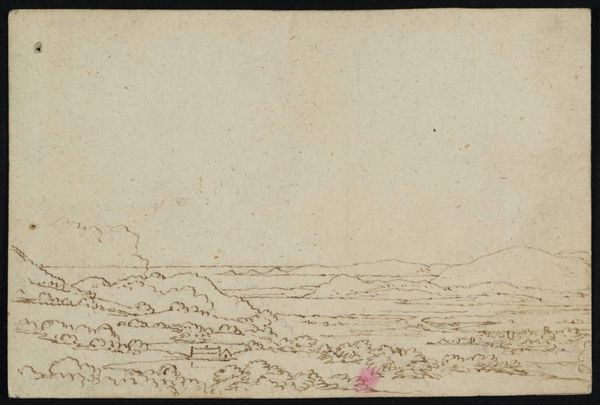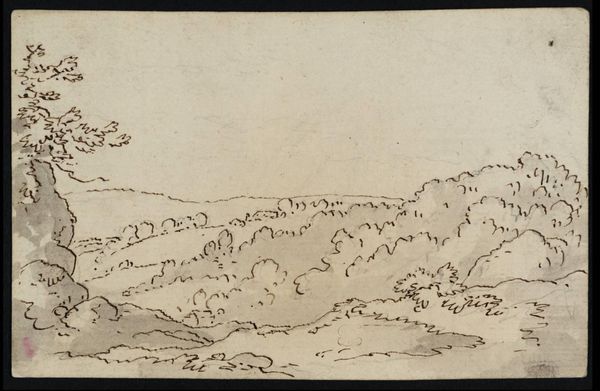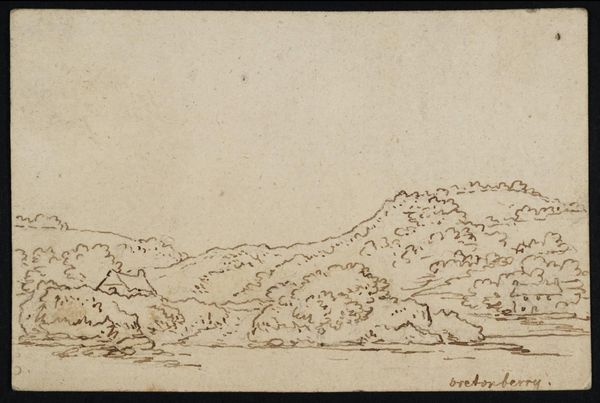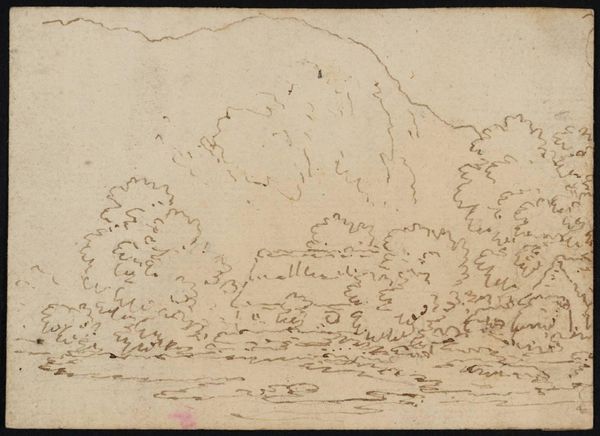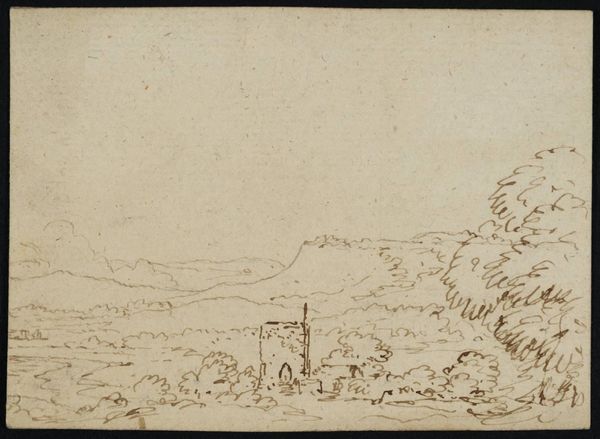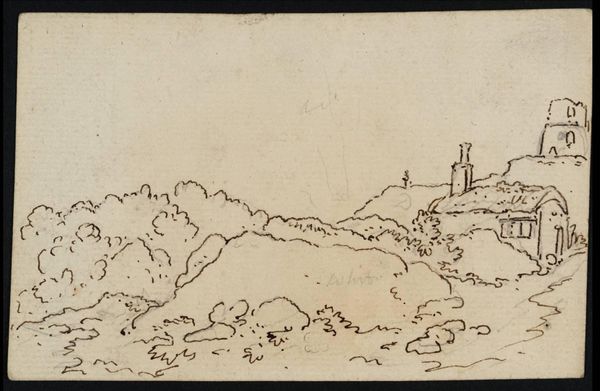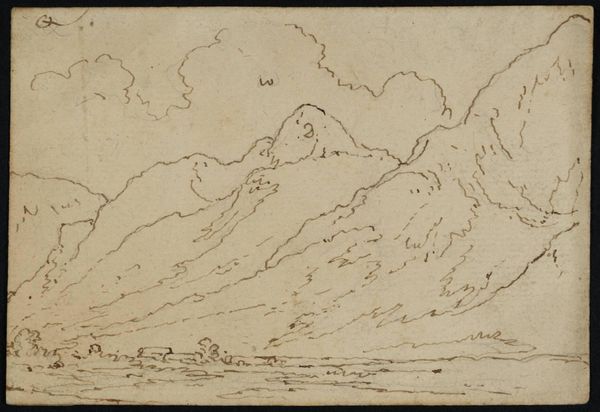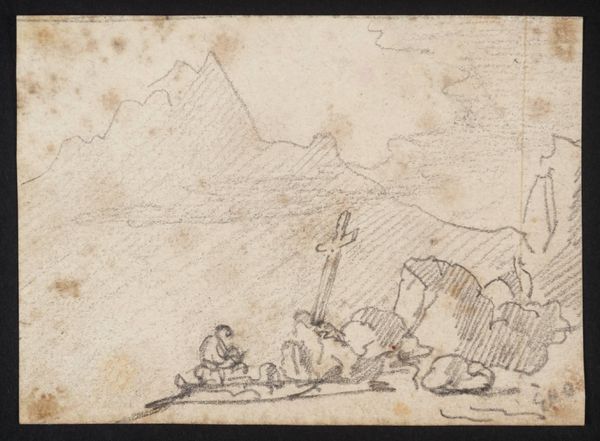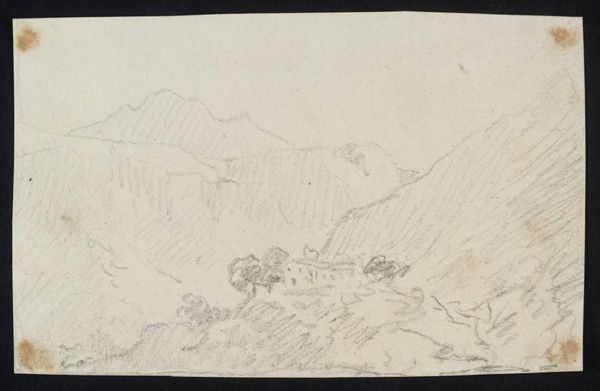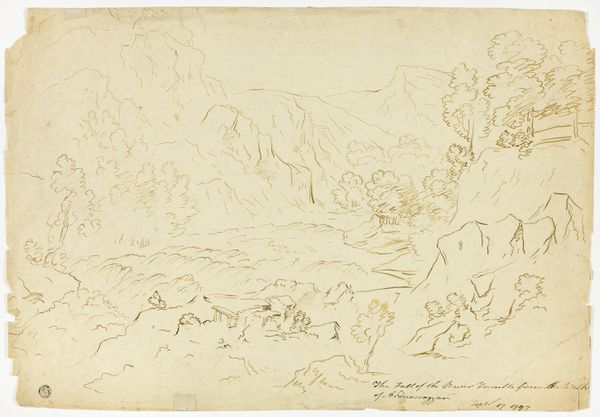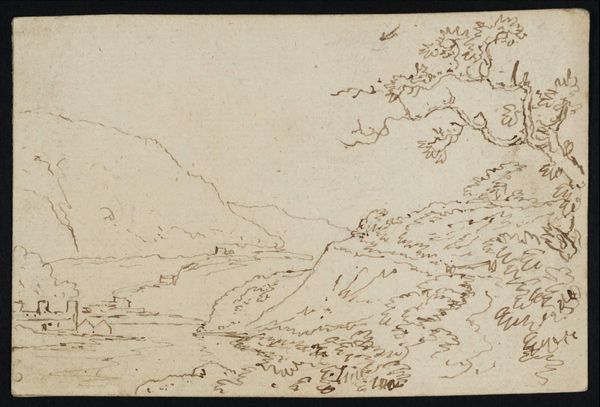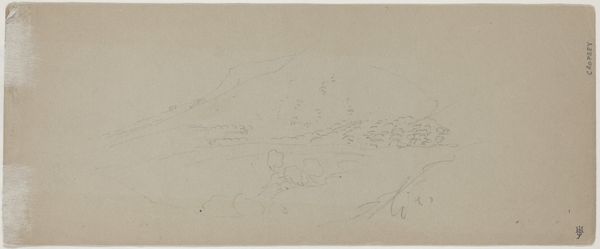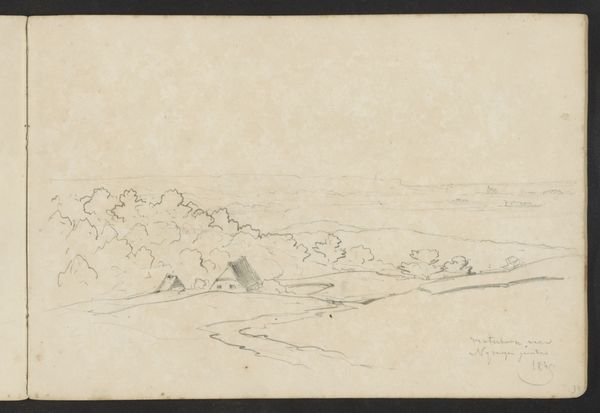
Dimensions: support: 77 x 101 mm
Copyright: CC-BY-NC-ND 4.0 DEED, Photo: Tate
Curator: Here we have Philip James De Loutherbourg's "View up Nant Ffrancon towards the Glyders," currently residing in the Tate Collections. Editor: My first thought is of how small it is! And how quickly the artist captured such a monumental landscape. Curator: Indeed, this little sketch shows a keen interest in the sublime, and the artistic and philosophical movements of the period. The Glyders themselves were often seen as symbols of untamed nature. Editor: I wonder if he saw the Glyders as metaphors for the social and political upheavals of the era? After all, the late 18th century was a time of revolutions and radical changes in Europe. Curator: That's an interesting perspective; certainly, De Loutherbourg was very aware of the public role of art in shaping perceptions. Editor: I like thinking about how art helps us to look at landscapes not just as pretty scenes, but as reflections of our human experience and history. Curator: Yes, the artistic depictions of places shape our socio-cultural understanding of them.
